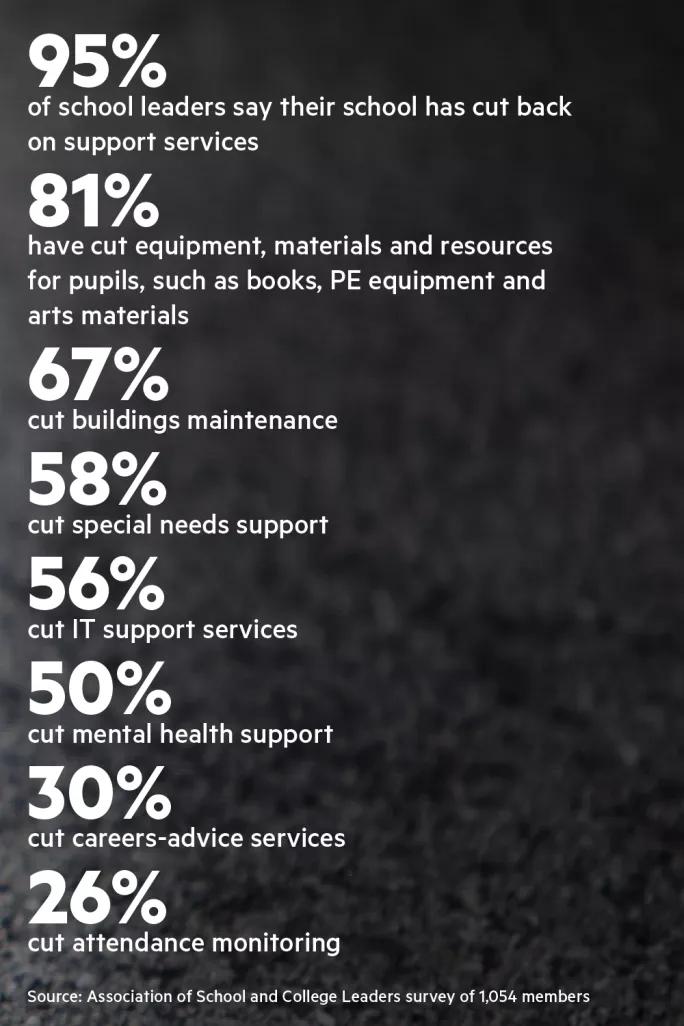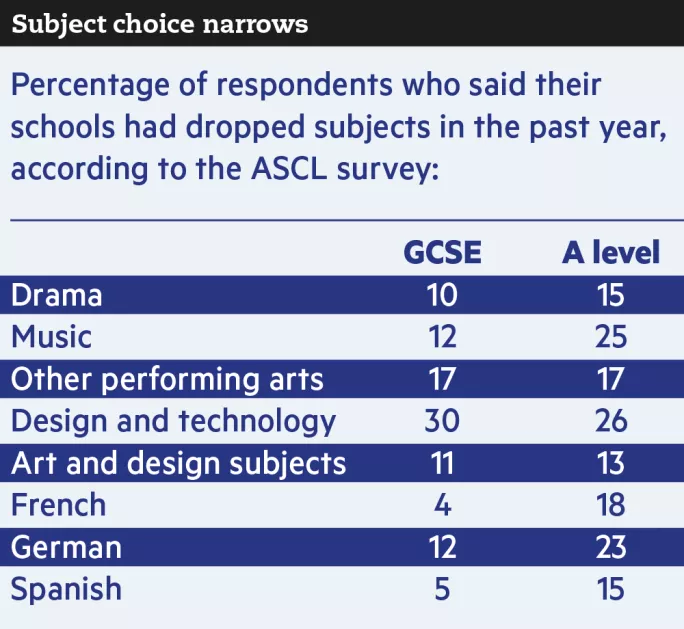Class sizes up to 40 as heads face ‘impossible choices’

More than a billion pounds extra was pledged for the cash-strapped schools sector in this week’s Budget.
But with the funding to be released over several years and much of it due to pay for new free schools and grammars, the chancellor’s speech has not allayed the financial fears of many heads. Justine Greening will find that out first-hand when she addresses the Association of School and College Leaders’ (ASCL) annual conference in Birmingham today.
The omens for the education secretary are not good. ASCL has released the results of a poll of school leaders revealing that they are being forced to make “impossible choices”.
Class sizes are now as high as 40, support for vulnerable pupils is being cut and the curriculum is being narrowed as subjects are dropped.
The survey of 1,054 ASCL members in England - mainly working in secondary schools - shows that 82 per cent of respondents said their school has had to increase class sizes in the past 12 months.
The average largest class size among the cohort is 33 pupils. However, 129 respondents said their largest class has 35 or more pupils, while nine have 40 students or more.
The impact of class size on educational outcomes has been hotly debated. The Organisation for Economic Cooperation and Development, which runs the Programme for International Student Assessment’s international education rankings, has said smaller classes do not boost pupils’ performance.
Space is harder to manage and behaviour becomes worse
However, respondents to ASCL’s survey are adamant that funding-driven class-size increases are detrimentally affecting their schools. One leader commented: “As teaching loads increase, the increase in class sizes will impact on teachers’ ability to manage classroom behaviour, as they are more stressed and tired.”
Another said: “Larger classes have a wider impact on students - feedback is more problematic, space is harder to manage and behaviour, incrementally, becomes worse.”
ASCL attempted to highlight funding problems earlier this week with its Twitter campaign #whatwouldyoucut, and the survey confirms the sense of gloom, with 95 per cent of school leaders saying that their support services have had to be cut back.
There is particular concern that provision for vulnerable students will be impacted - 58 per cent of respondents said special needs support has been hit and 50 per cent said that mental health support has been affected.
One school leader, who responded to the survey, said: “The number of students with complex needs, including mental health conditions, is rising and we have had to cut the provision to support them.
“This has often only added to their distress and has made it more difficult for them to engage with their learning.”
Fears over SEND support
Another respondent said pupils were being made to “suffer” by the pursuit of “more and more savings”.
“Whether it be for behaviour, SEND, emotional, mental health or attendance issues, schools will simply not have the resource to do additional work with young people or their families,” they added.
The poll also suggests that funding pressures are leading to a narrowing of the curriculum. Seventy-two per cent of respondents whose schools teach key stage 4 said courses had had to be removed from their GCSE options or vocational subjects.
For respondents in schools with sixth forms, 79 per cent said they have had to drop A levels or vocational subjects.

ASCL interim general secretary Malcolm Trobe said: “This survey shows the impossible choices school leaders are having to make. Reduced budgets means fewer staff and with fewer staff, class sizes have to increase.”
He added that the effect on mental health support was “particularly worrying at a time when the incidence of mental health problems among young people is rising and local health services are overwhelmed and under-resourced”.
The National Audit Office warned last month that £6.7 billion was needed to restore school buildings to a “satisfactory” condition; ASCL’s survey finds that 67 per cent of leaders said maintenance of premises has been affected by the funding situation.
One leader claimed that “increasing numbers of students are taught in badly maintained and leaking buildings”.

Sixty-eight per cent said enrichment activities have had to be cut back, including educational trips and visits, school clubs and sports fixtures.
“When finding savings in response to financial pressures is coupled with the requirement to succeed against performance-measure pressures, the main victims have been arts and extracurricular activities,” one school leader said.
The survey also reveals that the apprenticeship levy is further squeezing budgets, with 71 per cent of school leaders saying it represents further additional unfunded costs.
A Department for Education spokesperson said: “The government has protected the core schools budget in real terms since 2010, with funding at its highest level on record. But the system for distributing that funding across the country is unfair, opaque and outdated. We are going to end the postcode lottery in school funding and under the proposed national schools funding formula, more than half of England’s schools will receive a cash boost.
“We recognise that schools are facing cost pressures, which is why we will continue to provide support to help them use their funding in cost-effective ways.”
You need a Tes subscription to read this article
Subscribe now to read this article and get other subscriber-only content:
- Unlimited access to all Tes magazine content
- Exclusive subscriber-only stories
- Award-winning email newsletters
Already a subscriber? Log in
You need a subscription to read this article
Subscribe now to read this article and get other subscriber-only content, including:
- Unlimited access to all Tes magazine content
- Exclusive subscriber-only stories
- Award-winning email newsletters